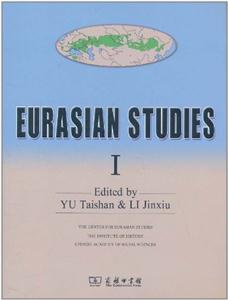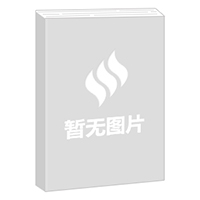包郵 EURASIAN STUDIES-Ⅰ
預(yù)估到手價(jià)是按參與促銷(xiāo)活動(dòng)、以最優(yōu)惠的購(gòu)買(mǎi)方案計(jì)算出的價(jià)格(不含優(yōu)惠券部分),僅供參考,未必等同于實(shí)際到手價(jià)。
有劃線標(biāo)記、光盤(pán)等附件不全詳細(xì)品相說(shuō)明>>
-
>
考研英語(yǔ)背單詞20個(gè)詞根詞綴
-
>
西班牙語(yǔ)詞根寶典
-
>
美國(guó)K-12原版語(yǔ)文課本--初中·下(全12冊(cè))
-
>
流浪地球劉慈欣
-
>
西南聯(lián)大英文課 輕讀禮盒版
-
>
英語(yǔ)大書(shū)蟲(chóng)世界經(jīng)典名譯典藏書(shū)系:中國(guó)人的精神 (英漢對(duì)照)(精選權(quán)威版本)
-
>
許淵沖譯唐詩(shī)三百首:漢文·英語(yǔ)
EURASIAN STUDIES-Ⅰ 版權(quán)信息
- ISBN:9787100075367
- 條形碼:9787100075367 ; 978-7-100-07536-7
- 裝幀:簡(jiǎn)裝本
- 冊(cè)數(shù):暫無(wú)
- 重量:暫無(wú)
- 所屬分類(lèi):>>
EURASIAN STUDIES-Ⅰ 內(nèi)容簡(jiǎn)介
《歐亞學(xué)刊(英文版)》主要內(nèi)容包括:Salutations from the Foundation for East-West Understanding and Cooperation to Eurasian Studies (CFES, CASS)、The Editors、Editorial Foreword、A Study on the Kidarites:Based Primarily on Documentary Sources、History of the Yeda Tribe (Hephthalites):Further Issues、Further Remarks on the Migrations and Settlements of the Sogdians in the Northern Dynasties, Sui and Tang、Chengbang and the Tang Empire、Tribes of the Mohe and the Founding Group of the Bohai State等。
EURASIAN STUDIES-Ⅰ 目錄
Salutations from the Foundation for East-West Understanding and Cooperation to Eurasian Studies (CFES, CASS)
The Editors
Editorial Foreword
Wan Xiang
A Study on the Kidarites:Based Primarily on Documentary Sources
Yu Taishan
History of the Yeda Tribe (Hephthalites):Further Issues
Rong Xinjiang
Further Remarks on the Migrations and Settlements of the Sogdians in the Northern Dynasties, Sui and Tang
Li Jinxiu
Chengbang and the Tang Empire
Yang Jun
Tribes of the Mohe and the Founding Group of the Bohai State
Chen Gaohua
Several Issues about Turpan in the Ming Dynasty
Khoshut Tsengel (Qinggeli)
The Formation of the D6rben Oyirad Alliance
Shen Weirong
Chinese Tantric Buddhist Literature under the Tangut Kingdom and Yuan Dynasty:Chinese translations of Tibetan
Ritual Texts unearthed in Khara Khoto
Zhou Weizhou
On the Relationship and Border Demarcation Problems between Tibet and Ladakh in the 19th Century
Lin Wushu and Wang Yuanyuan
Persian Zoroastrianism and the Worship of the God of Xian in Ancient China
Rui Chuanming
A Study on the Relations between Maitreyan Faith and Manichaeism
Ma Xiaohe
The Manichaean "Twelve Dominions" and "Three Days of Light".
EURASIAN STUDIES-Ⅰ 節(jié)選
In the 17th year (1504) of Hongzhi, Ahmed died and his eldest son Mansur succeeded him. Mansur had four brothers (some said three): his younger brother Babacha 把巴叉 (or Babadai 把巴歹), who had the same mother as Mansur, and younger brothers Ren Timur 忍帖木兒, Zhen Timur 真帖木兒and an unknown one, who had different mothers. ZhenTimur was detained by the Ming Dynasty in Ganzhou for a time and later sent back. Babacha controlled Aksu 阿克蘇 (today's Aksu/Aqsu, Xinjiang). After the Ming recovered Hami fora second time, Shanba was made king of Hami. When he died, his son Baiya 拜牙 succeeded to the throne. In the 8th year (1513) of the Zhengde 正德 reign, Baiya fied to Turpan, and from there he was sent to "the land of Sultan Mansur's younger brother Babacha in Aksu". Babacha and Mansur "did not get on harmoniously as brothers". When the Ming court "iSsued an imperial edict" requesting Babacha to send Baiya "back to his home state", "the head of Turpan's tribute mission and Hami's governing head" traveled together to Aksu to present the order and rewards. Obviously, Mansur was trying to prevent Babacha from establishing direct contact with the Ming Dynasty. According to the historical account, relations between Babacha and Mansur were strained because Babacha "blamed his elder brother [Mansur] for committing the wrong of cutting off the golden road", in other words, by initiating war swhich resulted in the Ming Dynasty closing its doors and stopping trade between the Central Plains and Xinjiang, the "golden road" 金路 referring to the trade routes. The city ofAksuwas under Babacha's control. In the meantime, Mansur "deployed the Chalishi 察力失(叉力失) army to the land of the Hans", in preparation for looting raids. Chalishi was also affili-ated to Turpan, as described by Yan Song 嚴(yán)嵩, writing in the 16th year (1537) of the Jiajing嘉靖 reign: "It was six or seven hundred li from Turpan to Chalishi, which was called Yanze 盬澤 in the Han Dynasty and belongs to Turpan now." It could be concluded from the account that the Ming court saw Chalishi as part of the Turpan state. Gui E said that Babacha“l(fā)ives in the walled town of Chalishi, about four or five hundred li west of that of Turpan, and has about 1,000 or 2,000 soldiers". This record conflicts with other accounts in which Babacha was domiciled in Aksu. It is possible that Babacha lived in Chalishi before going to Aksu, but the statement could also have been erroneous. However, it seems certain that Chalishi and Aksu both belonged to the Turpan polity during the reign of Mansur, and it can be concluded that Turpan was very influential in the first half of the 16th century.
In the 24th year (1545) of Jiajing, "Mansur died, and his eldest son Sha 沙 succeeded to the throne and became Sultan. His younger brother Muhammad 馬黑麻 also called himself Sultan and took Hamj". At the end of the 44th year (1564/1565) or the beginning ofthe 46th year (1566) of Jiajing, "Sultan Sha, in a secret act, looted the northern tribe [Oyirad], and died after he was shot by an arrow.
……
- >
李白與唐代文化
- >
苦雨齋序跋文-周作人自編集
- >
推拿
- >
人文閱讀與收藏·良友文學(xué)叢書(shū):一天的工作
- >
山海經(jīng)
- >
上帝之肋:男人的真實(shí)旅程
- >
煙與鏡
- >
莉莉和章魚(yú)















